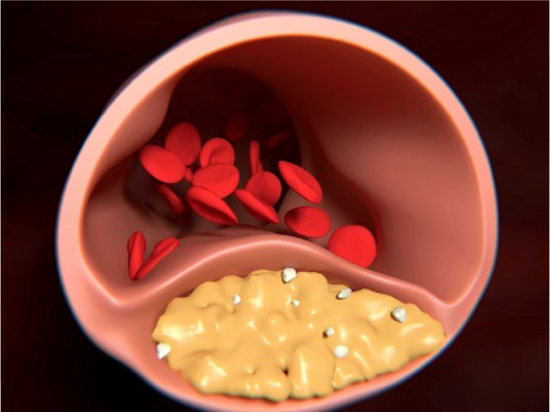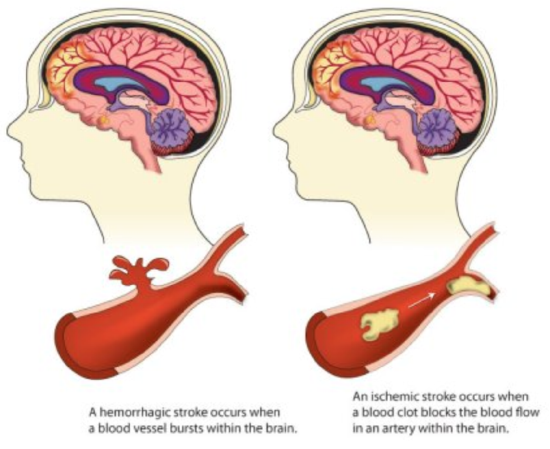Coronary artery disease (CAD)
Coronary artery disease (CAD) is the most common type of heart disease in the United States. For some people, the first sign of CAD is a heart attack. Therefore, taking steps to reduce your risk for CAD is essential.
Research suggests that CAD (also referred to as coronary heart disease, abbreviated CHD) starts when certain factors damage the inner layers of the coronary arteries. These factors include:
- Smoking
- High levels of certain fats and cholesterol in the blood
- High blood pressure
- High levels of sugar in the blood due to insulin resistance or diabetes
Causes of CAD

When damage occurs, your body starts a healing process. The healing may cause plaque to build up where the arteries are damaged. Plaque is made up of deposits of cholesterol and other substances in the artery. This progression of plaque build up is called atherosclerosis.
The buildup of plaque in the coronary arteries may start in childhood. Over time, plaque can narrow or block some of your coronary arteries. This reduces the flow of oxygen-rich blood to your heart muscle.
Eventually, an area of plaque can rupture (break open). If this happens, blood cell fragments called platelets will stick to the site of the injury and may clump together to form blood clots. Blood clots narrow the coronary arteries even more and worsen angina (chest discomfort or pain) or cause a heart attack.
Over time, CAD can weaken the heart muscle. This may lead to heart failure, a serious condition where the heart can’t pump blood the way that it should. An irregular heartbeat, or arrhythmia, also can develop.
If you or a loved one has CAD, watch this video to learn how to actively manage it while also reducing further risk:
YouTube Video: Living with and Managing Coronary Artery Disease. Located at:: https://www.youtube.com/watch?v=V8lEEqTvBk4&feature=youtu.be
Coronary artery disease is the most common type of heart disease, but there are many other conditions that affect the heart:
Acute coronary syndrome is a term that includes heart attack and unstable angina.
Angina, a symptom of coronary artery disease, is chest pain or discomfort that occurs when the heart muscle is not getting enough blood. Angina may feel like pressure or a squeezing pain in the chest. The pain also may occur in the shoulders, arms, neck, jaw, or back. It may feel like indigestion.
There are two forms of angina—stable or unstable:
- Stable angina happens during physical activity or under mental or emotional stress.
- Unstable angina is chest pain that occurs even while at rest, without apparent reason. This type of angina is a medical emergency.
Aortic aneurysm and dissection are conditions that can affect the aorta, the major artery that carries blood from the heart to the body. An aneurysm is an enlargement in the aorta that can rupture or burst. A dissection is a tear in the aorta. Both of these conditions are medical emergencies.
Arrhythmias are irregular or unusually fast or slow heartbeats. Arrhythmias can be serious. One example is called ventricular fibrillation. This type of arrhythmia causes an abnormal heart rhythm that leads to death unless treated right away with an electrical shock to the heart (called defibrillation). Other arrhythmias are less severe but can develop into more serious conditions, such as atrial fibrillation, which can cause a stroke.
Atherosclerosis occurs when plaque builds up in the arteries that supply blood to the heart (called coronary arteries). Plaque is made up of cholesterol deposits. Plaque buildup causes arteries to narrow over time.
Atrial fibrillation is a type of arrhythmia that can cause rapid, irregular beating of the heart’s upper chambers. Blood may pool and clot inside the heart, increasing the risk for heart attack and stroke.
Cardiomyopathy occurs when the heart muscle becomes enlarged or stiff. This can lead to inadequate heart pumping (or weak heart pump) or other problems. Cardiomyopathy has many causes, including family history of the disease, prior heart attacks, uncontrolled high blood pressure, and viral or bacterial infections.
Congenital heart defects are problems with the heart that are present at birth. They are the most common type of major birth defect. Examples include abnormal heart valves or holes in the heart’s walls that divide the heart’s chambers. Congenital heart defects range from minor to severe.
Heart failure is often called congestive heart failure because of fluid buildup in the lungs, liver, gastrointestinal tract, and the arms and legs. Heart failure is a serious condition that occurs when the heart can’t pump enough blood to meet the body’s needs. It does not mean that the heart has stopped but that muscle is too weak to pump enough blood. The majority of heart failure cases are chronic, or long-term heart failures.
The only cure for heart failure is a heart transplant. However, heart failure can be managed with medications or medical procedures.
Peripheral arterial disease (PAD) occurs when the arteries that supply blood to the arms and legs (the periphery) become narrow or stiff. PAD usually results from atherosclerosis, the buildup of plaque and narrowing of the arteries. With this condition, blood flow and oxygen to the arm and leg muscles are low or even fully blocked. Signs and symptoms include leg pain, numbness, and swelling in the ankles and feet.
Rheumatic heart disease is damage to the heart valves caused by a bacterial (streptococcal) infection called rheumatic fever.
Types of Strokes

The main types of stroke are:
- Ischemic stroke.
- Hemorrhagic stroke.
- Transient ischemic attack (a warning or “mini-stroke”).
Ischemic Stroke
Most strokes (85%) are ischemic strokes. If you have an ischemic stroke, the artery that supplies oxygen-rich blood to the brain becomes blocked.
Blood clots often cause the blockages that lead to ischemic strokes.
Hemorrhagic Stroke
A hemorrhagic stroke occurs when an artery in the brain leaks blood or ruptures (breaks open). The leaked blood puts too much pressure on brain cells, which damages them.
High blood pressure and aneurysms—balloon-like bulges in an artery that can stretch and burst—are examples of conditions that can cause a hemorrhagic stroke.
There are two types of hemorrhagic strokes:
- Intracerebral hemorrhage is the most common type of hemorrhagic stroke. It occurs when an artery in the brain bursts, flooding the surrounding tissue with blood.
- Subarachnoid hemorrhage is a less common type of hemorrhagic stroke. It refers to bleeding in the area between the brain and the thin tissues that cover it.
Transient Ischemic Attack (TIA)
A transient ischemic attack (TIA) is sometimes called a “mini-stroke.” It is different from the major types of stroke because blood flow to the brain is blocked for only a short time—usually no more than 5 minutes.
It is important to know that:
- A TIA is a warning sign of a future stroke.
- A TIA is a medical emergency, just like a major stroke.
- Strokes and TIAs require emergency care. Call 9-1-1 right away if you feel signs of a stroke or see symptoms in someone around you.
- There is no way to know in the beginning whether symptoms are from a TIA or from a major type of stroke.
- Like ischemic strokes, blood clots often cause TIAs.
- More than a third of people who have a TIA end up having a major stroke within 1 year if they don’t receive treatment, and 10%-15% will have a major stroke within 3 months of a TIA.
Recognizing and treating TIAs can reduce the risk of a major stroke. If you have a TIA, your health care team can find the cause and take steps to prevent a major stroke.




